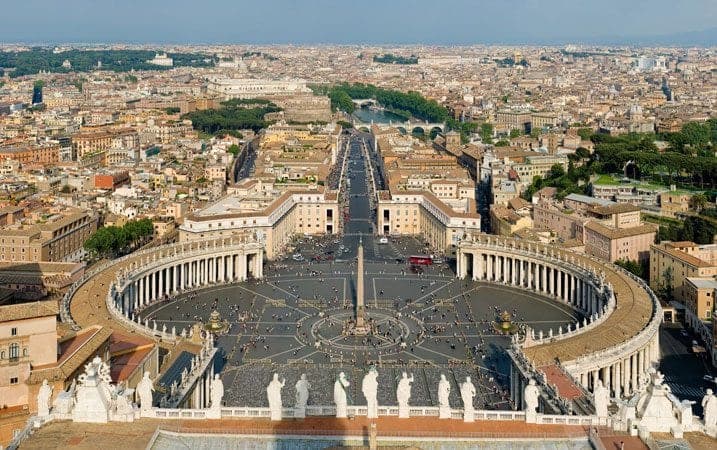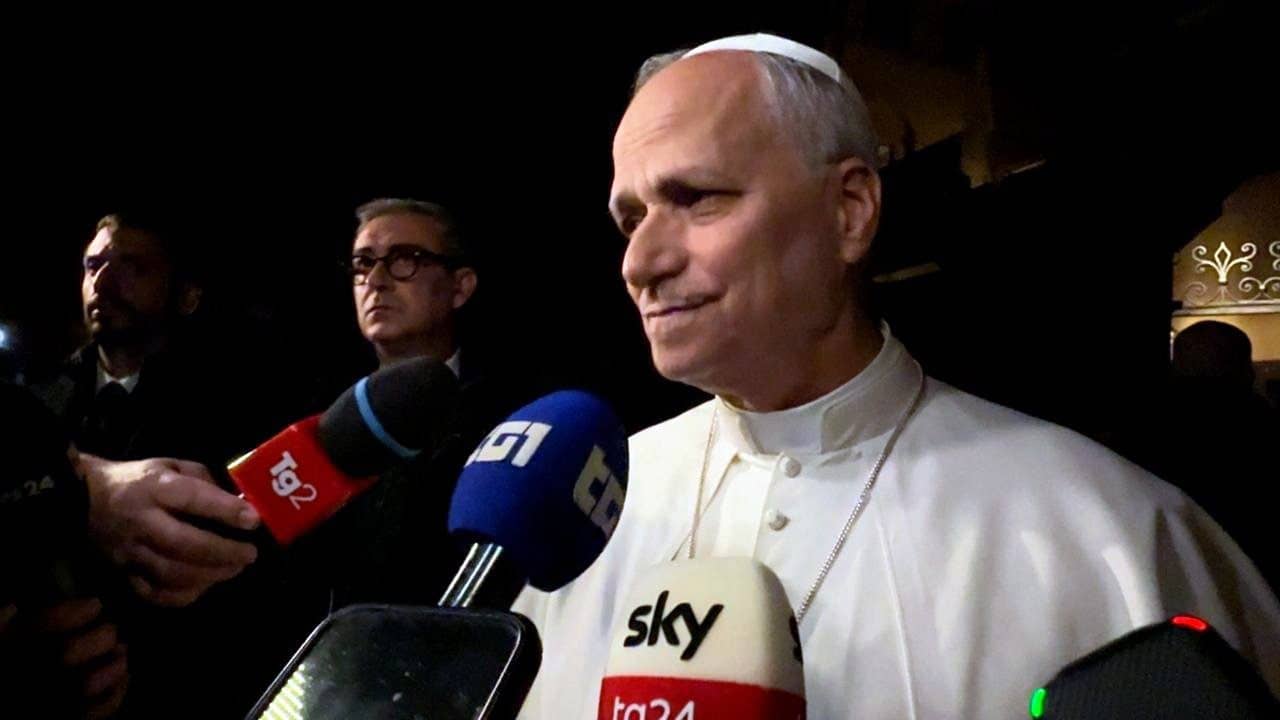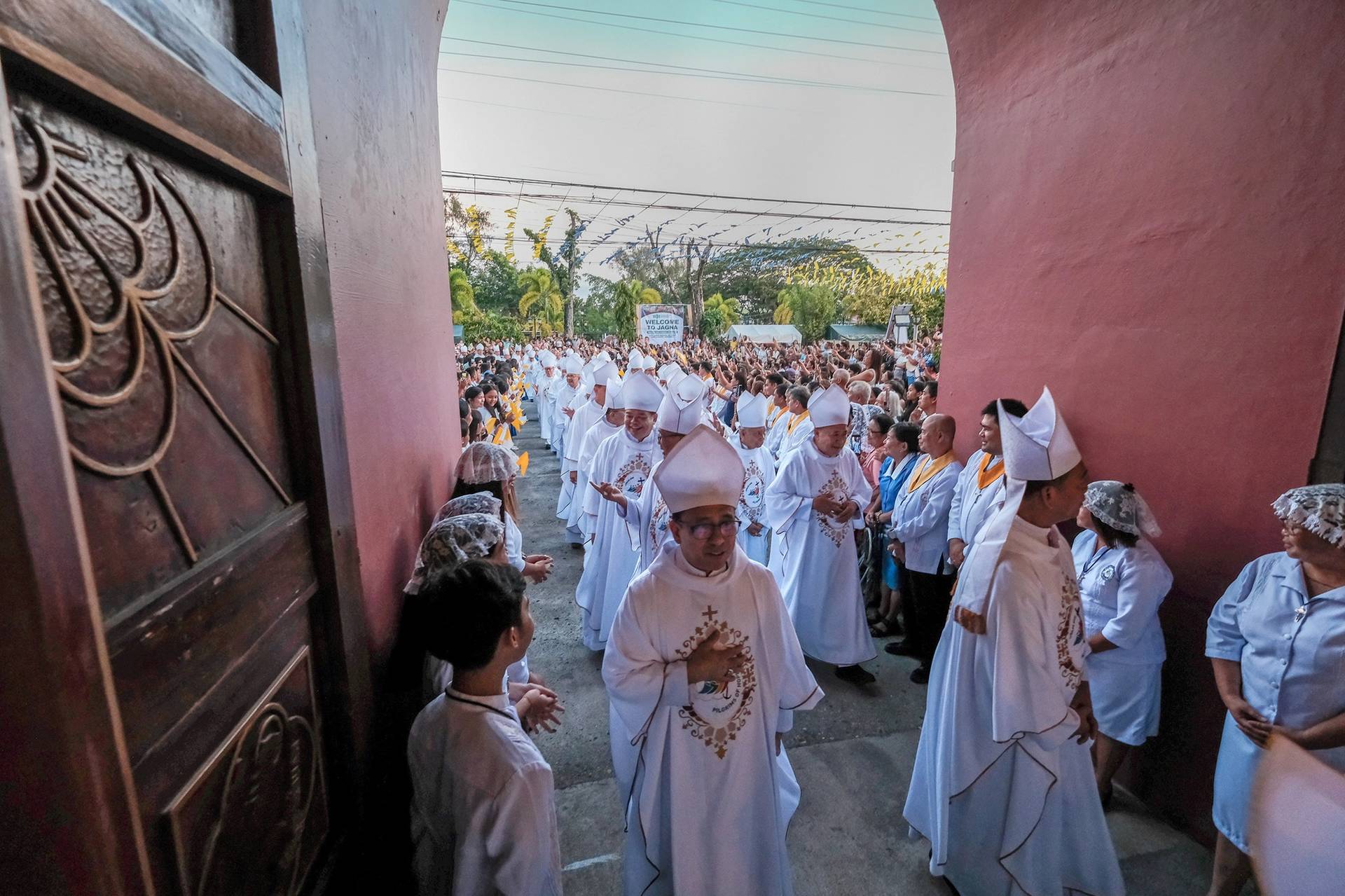After this week’s kerfuffle between GOP frontrunner Donald Trump and Pope Francis about whether building border walls is a Christ-like act, Trump supporters and others gleefully proclaimed the pope a hypocrite because the Vatican itself is completely surrounded by a big wall.
Except that it’s not.
Here’s one popular photo making the rounds:

This map, also circulating, shows St. Peter’s Square, on the right, closed off from the street by a wall. Perhaps visitors are given croziers to help them vault over.

In fact, Vatican City is wide open to anyone who wants to stroll down the Via della Conciliazione, located in Italy, and into St. Peter’s Square. The only thing that may slow you down are metal detectors.
In the square, you’ll be surrounded by two hemicycles of a four-row Bernini colonnade, open to the adjacent streets, designed to symbolically welcome you into the arms of Holy Mother Church.
Here’s what it really looks like from the street, with St. Peter’s Basilica straight ahead:

And here’s the opposite view, from the basilica in Vatican City across the square out to the street, which is in Italy:

Not quite the forbidding fortress some are portraying.
By Thursday night, Trump had softened his tone, saying during a CNN town hall that he likes the pope and what he represents. “I don’t think this is a fight,” Trump said. “I think he said something much softer than was originally reported by the media.”
But he repeated the trope about the Vatican’s walls: “… he’s got an awfully big wall at the Vatican, I will tell you.”
He’s partly right: Large walls do surround most of the Vatican. They’re a medieval anachronism: Pope Leo IV built some of them in the 9th century to keep Church property safe from invading troops, while others are a bit newer, built in the 16th century as a sort of political statement about the power of the papacy.
“The walls are a fortification, there is no question, but they were a fortification built at a time when armed invasions by barbarians and other forces were happening,” Diane Apostolos-Cappadona, a Catholic studies professor at Georgetown, told The New York Times. “And that is not the same thing we are talking about with a wall between the US and Mexico.”
Vatican City is a sovereign state, the smallest internationally recognized independent state in the world by both area (110 acres) and population (about 1,000).
To gain access to St. Peter’s Basilica as well as the Vatican Museums — which includes the Sistine Chapel — requires waiting in a long security line and going through a metal detector.
Access to other parts of the Vatican — including the gardens, the Vatican Bank, and Casa Santa Marta, where Pope Francis lives — is a bit more difficult. It requires having the proper credentials, such as a press pass or an academic affiliation, and a short conversation with a member of the Swiss Guard, which protects most entrances.
Unlike the walls, the Guard are not anachronisms. They carry guns, and their protection is supplemented with assistance from Italian police. But they are a throwback to a time when the pope really needed protection, and it stopped his enemies from saying, “You and what army?” when facing a challenge from the Holy See.
















